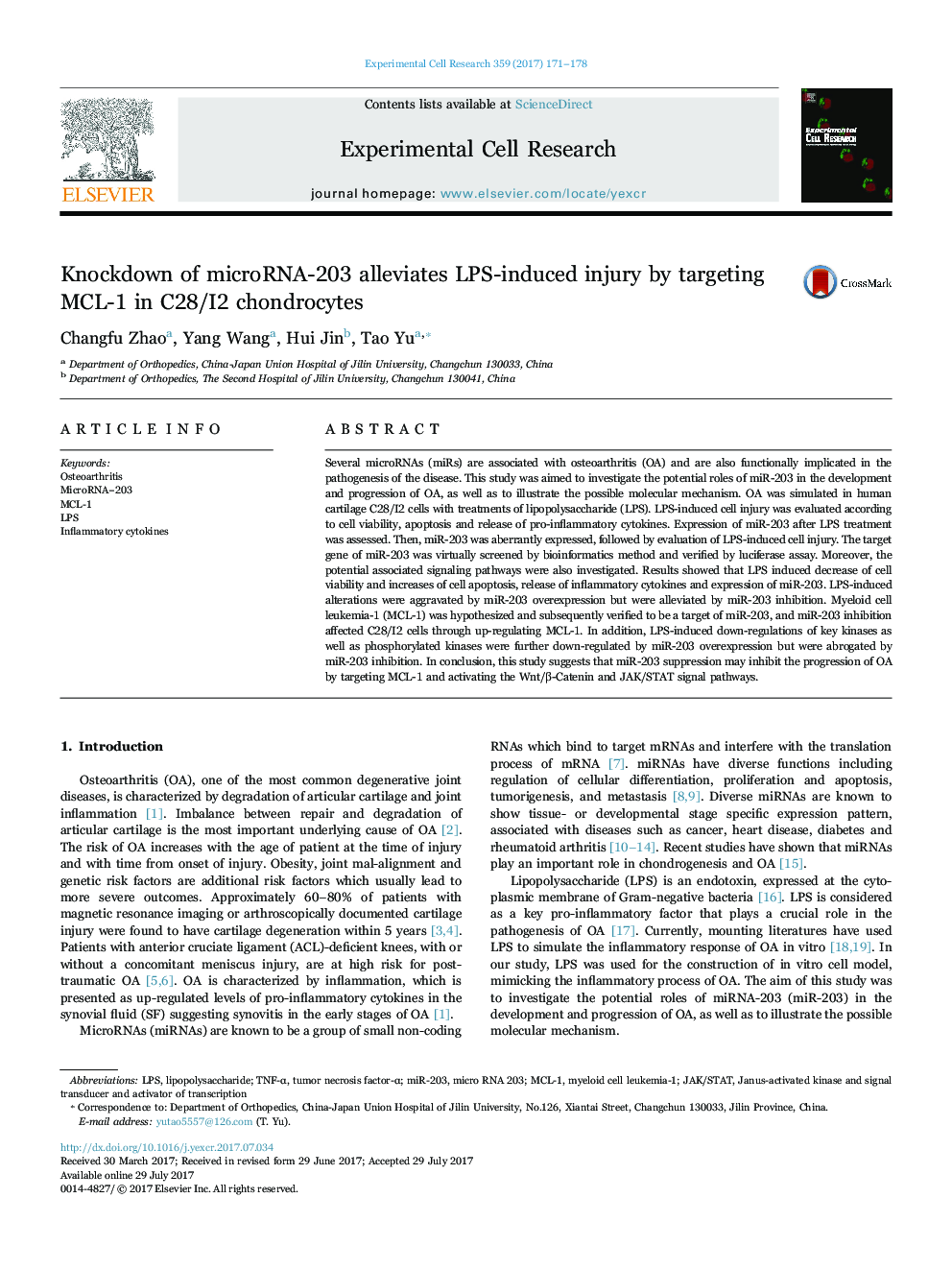| Article ID | Journal | Published Year | Pages | File Type |
|---|---|---|---|---|
| 5527058 | Experimental Cell Research | 2017 | 8 Pages |
â¢LPS decreases cell viability but increases apoptosis and releases of pro-inflammatory factors.â¢2. miR-203 is up-regulated by LPS.â¢LPS-induced alterations are aggravated by miR-203 overexpression.â¢4. miR-203 inhibition alleviates LPS-induced alteration by targeting MCL-1.â¢MCL-1 affects activations of Wnt/β-Catenin and JAK/STAT pathways.
Several microRNAs (miRs) are associated with osteoarthritis (OA) and are also functionally implicated in the pathogenesis of the disease. This study was aimed to investigate the potential roles of miR-203 in the development and progression of OA, as well as to illustrate the possible molecular mechanism. OA was simulated in human cartilage C28/I2 cells with treatments of lipopolysaccharide (LPS). LPS-induced cell injury was evaluated according to cell viability, apoptosis and release of pro-inflammatory cytokines. Expression of miR-203 after LPS treatment was assessed. Then, miR-203 was aberrantly expressed, followed by evaluation of LPS-induced cell injury. The target gene of miR-203 was virtually screened by bioinformatics method and verified by luciferase assay. Moreover, the potential associated signaling pathways were also investigated. Results showed that LPS induced decrease of cell viability and increases of cell apoptosis, release of inflammatory cytokines and expression of miR-203. LPS-induced alterations were aggravated by miR-203 overexpression but were alleviated by miR-203 inhibition. Myeloid cell leukemia-1 (MCL-1) was hypothesized and subsequently verified to be a target of miR-203, and miR-203 inhibition affected C28/I2 cells through up-regulating MCL-1. In addition, LPS-induced down-regulations of key kinases as well as phosphorylated kinases were further down-regulated by miR-203 overexpression but were abrogated by miR-203 inhibition. In conclusion, this study suggests that miR-203 suppression may inhibit the progression of OA by targeting MCL-1 and activating the Wnt/β-Catenin and JAK/STAT signal pathways.
